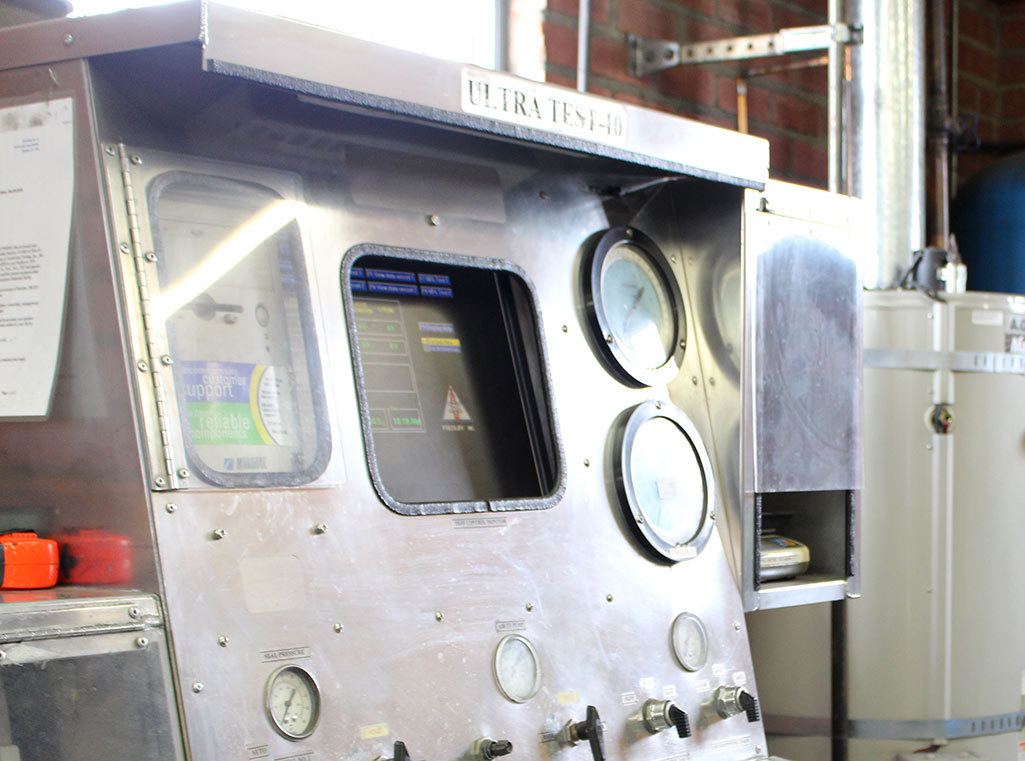
Hydrostatic Testing
Our Air Source Industries team meets and exceeds the maintenance and safety requirements to test and certify your compressed gas cylinders. When you are renting your gas cylinders from us, we provide you with cylinders that have been thoroughly tested and exchange any cylinders getting close to their next testing date so you don’t have to think about it. The safety of your staff and our staff is our top priority.
Learn about the hydrostatic testing we do to recertify cylinders are safe and compliant with US laws.
What is a Hydrostatic Test and Why is it Required?
The U.S. Department of Transportation (DOT) requires compressed gas cylinders to be tested on a regular basis to ensure their safety. The test is critical as a structurally unsound gas cylinder under pressure could explode causing injuries and property damage. Depending on the cylinder type, the DOT requires them to be tested every 3, 5, or 10 years. The cylinder label will have the date the cylinder was last tested and the pressure rating with the labeling of “DOT” and the maximum pounds-force per square inch (psi).
The hydrostatic test is a way to determine the structural integrity of the compressed gas cylinder and confirm it is still safe to use. The cylinder will be verified to still be structurally sound through visual and pressure testing. The “hydro” part of the hydrostatic test includes filling the cylinder with water and then pressurizing it to test the wall stability of the cylinder.
The Visual Exam
Our staff begin with a thorough visual exam. We examine the cylinder body and look for any signs of cracks or stress. This includes the gas valve and around the cylinder opening. A staff member will also examine inside of the cylinder with a flashlight to inspect the interior structural integrity.
If a staff member sees any issues from their visual inspection that can’t be resolved, the cylinder will not pass and will be removed from circulation.
The Hydro Pressure Test
The cylinder is placed in a testing container and the cylinder is completely filled with water (the “hydro” in hydrostatic test). The staff member will then increase the pressure of the cylinder itself above its recommended max pressure. The reason for this is to expand the cylinder wall outward under the pressure to see how much water is being displaced in the testing container. The amount of water displaced is how the staff member measures the expansion.
The testing container is connected to a computer that records the displaced water and the pressure. Our staff member will review the results of the hydrostatic test and confirm the pressure is within the expected threshold to pass the test.
If the cylinder is expanding beyond a specific limit or has a leak, then the cylinder fails the test and cannot be used. The majority of cylinders pass the hydrostatic test and are returned to circulation.
Conclusion
Compressed cylinder customers need to work with a trusted company that thoroughly hydrotests and certifies cylinders according to required DOT laws. Air Source Industries customers know all their cylinders have been professionally tested and passed all safety checks.
If you have a compressed gas cylinder that needs to be recertified, please bring it to our convenient Long Beach location. Please note we do not repair or hydrotest paintball cylinders or fire extinguishers. Get a quote today or speak with our customer service team at (562) 426-4017.
Sources
- https://www.phmsa.dot.gov/hazmat/pressure-vessels-approvals/procedures-application-approval-requalify-dot-cylinders
- https://www.youtube.com/watch?v=4BWF8FCOjsU
- http://www.tymsinc.com/hydrostatic-faq.html
- https://en.wikipedia.org/wiki/Pounds_per_square_inch
- https://www.youtube.com/watch?v=AlFWTcgjhl8
- https://www.youtube.com/watch?v=TvowVlb0Wyo

